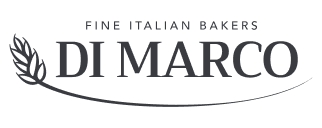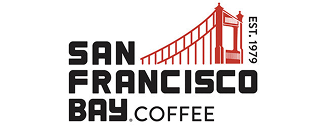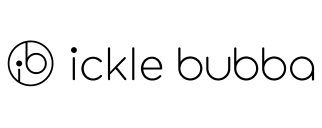Artwork Proofing Tools
Review and refine packaging artwork quality for an error-free launch with Artwork Flow’s artwork proofing platform.
- Simplify artwork reviews with smart proofing tools.
- Share accurate feedback using annotations.
- Verify fonts, colors, barcodes, and dimensions on your artwork.





.svg)


.png)
.webp)

%204.webp)
.webp)
%202.webp)
.webp)
.webp)
.webp)

.webp)




.webp)
.svg)


.webp)
.webp)








.webp)





.webp)
.webp)
.webp)





.svg)


.png)
.webp)
.svg)
%204.webp)
%202.webp)
.svg)

.svg)

.webp)




.webp)
.svg)


.webp)
.webp)








.webp)





.webp)
.webp)
.webp)





.svg)


.png)
.png)
.png)
.webp)
.svg)
%204.webp)
%202.webp)
.svg)

.svg)

.webp)




.webp)
.svg)


.webp)
.webp)








.webp)





.webp)
.webp)
.webp)





.svg)


.png)
.webp)
.svg)
%204.webp)
%202.webp)
.svg)

.svg)

.webp)




.webp)
.svg)


.webp)
.webp)








.webp)





.webp)
.webp)
.webp)
See how top brands proof smarter
Experience best-in-class artwork proofing
Add precise feedback to artwork


Breakdown silos, proof without borders
Leave the grunt work to AI label compliance


Track artwork changes with ease
Flow through artwork approval cycles


Review packaging files with flexibility
Launch labels flawlessly with
artwork proofing tool






Review with context
Add annotations your way with a wide range of tools on Artwork Flow’s smart creative proofing software.


Leave no errors behind
From typos to misaligned QR codes, mark every error with advanced annotation tools on our artwork proofing software and ensure your files are error-free before printing.

Proof smarter, launch faster
Skip manual artwork reviews with a virtual assistant proofing your files. ComplyAI runs automated compliance checks on your labels and lets you speed through packaging label approvals without missing a detail.

Keep every change on the books
Never lose track of a design edit. Artwork Flow’s version control allows you to maintain a detailed history of artwork changes and the file recovery is just a click away.
Drive artwork approvals with workflows
Artwork Flow’s artwork proofing software frees up processing time with fully customizable packaging review workflows that meet your operational needs. Move projects quickly with workflow templates and hit the shelves ahead of time, every time!

Free artwork proofing tools by Artwork Flow
Make Better Creative Decisions with Artwork Flow





Why Artwork Flow
Streamline workflows
Speed up artwork reviews with flexible workflows that simplify your creative lifecycle.
Centralize communication
Enable efficient design reviews with feedback from the whole team accessible from one centralized location.
Stay compliant
Upload regulatory and brand guidelines to our customizable rulebooks to implement them effortlessly across labels.
Maintain security
Employ best-in-class security and compliance measures to protect your assets online.

Control access
Manage users and their access to packaging files in your library.
Store artwork versions
Maintain every version of your artwork in the library and compare versions at any time to track changes.
Frequently asked questions
Artwork proofing simplifies collaboration on digital content, especially artwork, by centralizing feedback and approvals within a web-based platform. This eliminates the need for scattered emails and physical proofs, making the review process more efficient. For teams especially in graphic design, packaging, and regulatory fields, online proofing offers a centralized hub for reviewing and approving artwork.
Artwork proofing tools like Artwork Flow make design review easier by cutting your approval time by half. An artwork proofing software offers annotation tools, comparison tools, multi-stage approvals, custom workflows, checklists, and more.
Artwork proofing software is significantly faster than manual review. While manual reviews rely on email chains, PDFs, and physical proofs that can take days or weeks to consolidate feedback, digital proofing software centralizes comments, enables real-time collaboration, and automates approval workflows. This reduces review cycles, avoids back-and-forth delays, and helps teams finalize artwork in a fraction of the time.
Here is a step-by-step explanation to how Artwork Flow’s creative proofing software works:
- Begin by uploading your artwork: Upload your files — anything from pack shots and artwork to leaflets and inserts to Artwork Flow’s secure servers. You can manage and change access settings to ensure artwork is only available to accountable individuals across the various teams involved in the review and approval process.
- Proof your artwork files
Now, you can choose any artwork proofing tool from various options to check your design for any errors. With Artwork Flow’s artwork proofing tools, you can:
- Check spellings in texts upto 40 languages.
- Compare different versions of your artwork in 3-modes.
- Measure dielines in any packaging design.
- Extract color codes and identify font styles and sizes.
- Scan barcodes or QR codes.
- Collaborating across teams: Once the artwork has been proofed, each team can add their comments to the document. The comments will be visible to everyone, and threads will be maintained to avoid any confusion in communication. Packaging designs can thus be verified faster, and no errors will be left behind, ensuring your workflow is simplified and projects are completed without a hitch.
- Synchronize communication: With Artwork Flow’s proofing software, changes can be suggested and managed in real time. All accountable members will be notified of the latest comments and changes through real-time notifications, allowing teams to stay in the loop all the time.
Artwork proofing software streamlines the review and approval process for teams managing artwork within any organization. Here is how your teams can use our digital proofing solutions to improve your workflow:
- Streamline communication between stakeholders.
- Avoid packaging and brand compliance issues and product recalls.
- Simplify workflows to speed up approvals.
- Avoid multiple revisions with error-free designs.
- Improve transparency and accountability.
Artwork proofing tools are incredibly versatile and beneficial for a wide range of professionals and teams. Here are a few teams we provide the artwork proofing features:
- Graphic designers: They use proofing tools to share and receive feedback on various artwork files. Online proofing software facilitates collaboration with clients and internal teams, ensuring accurate revisions and approvals.
- Packaging development: Packaging teams rely on proofing tools to review and approve artwork for product labels and packaging designs. These tools help ensure accuracy in text, graphics, and regulatory information, preventing costly printing errors.
- Regulatory affairs: Regulatory teams use proofing tools to review and approve documents that require strict compliance, such as product labels and marketing materials.
- New Product Development (NPD): NPD teams use proofing tools to review and approve various aspects of new product launches, including packaging specifications, product mockups, and product documentation.
Overall, anyone who needs to review and approve digital content can benefit from using creative proofing tools.

























.svg)






